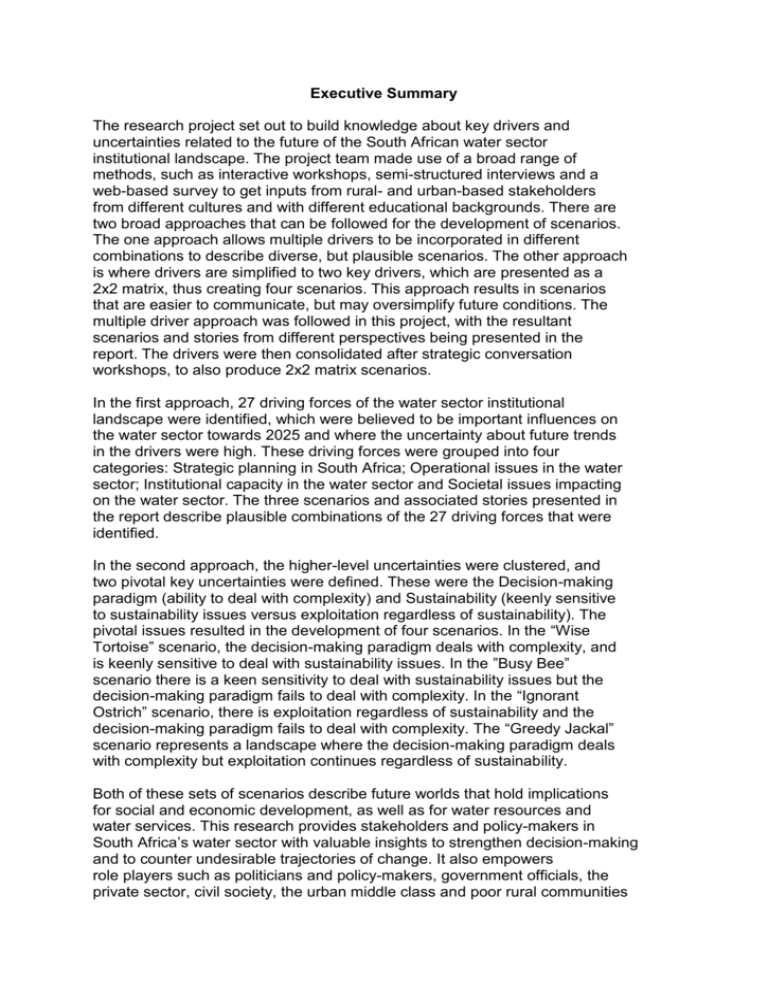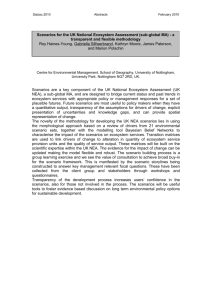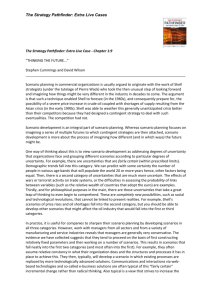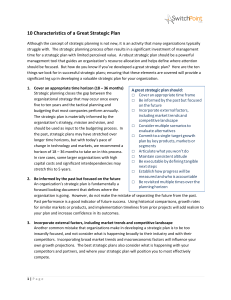Executive Summary for 1841
advertisement

Executive Summary The research project set out to build knowledge about key drivers and uncertainties related to the future of the South African water sector institutional landscape. The project team made use of a broad range of methods, such as interactive workshops, semi-structured interviews and a web-based survey to get inputs from rural- and urban-based stakeholders from different cultures and with different educational backgrounds. There are two broad approaches that can be followed for the development of scenarios. The one approach allows multiple drivers to be incorporated in different combinations to describe diverse, but plausible scenarios. The other approach is where drivers are simplified to two key drivers, which are presented as a 2x2 matrix, thus creating four scenarios. This approach results in scenarios that are easier to communicate, but may oversimplify future conditions. The multiple driver approach was followed in this project, with the resultant scenarios and stories from different perspectives being presented in the report. The drivers were then consolidated after strategic conversation workshops, to also produce 2x2 matrix scenarios. In the first approach, 27 driving forces of the water sector institutional landscape were identified, which were believed to be important influences on the water sector towards 2025 and where the uncertainty about future trends in the drivers were high. These driving forces were grouped into four categories: Strategic planning in South Africa; Operational issues in the water sector; Institutional capacity in the water sector and Societal issues impacting on the water sector. The three scenarios and associated stories presented in the report describe plausible combinations of the 27 driving forces that were identified. In the second approach, the higher-level uncertainties were clustered, and two pivotal key uncertainties were defined. These were the Decision-making paradigm (ability to deal with complexity) and Sustainability (keenly sensitive to sustainability issues versus exploitation regardless of sustainability). The pivotal issues resulted in the development of four scenarios. In the “Wise Tortoise” scenario, the decision-making paradigm deals with complexity, and is keenly sensitive to deal with sustainability issues. In the ”Busy Bee” scenario there is a keen sensitivity to deal with sustainability issues but the decision-making paradigm fails to deal with complexity. In the “Ignorant Ostrich” scenario, there is exploitation regardless of sustainability and the decision-making paradigm fails to deal with complexity. The “Greedy Jackal” scenario represents a landscape where the decision-making paradigm deals with complexity but exploitation continues regardless of sustainability. Both of these sets of scenarios describe future worlds that hold implications for social and economic development, as well as for water resources and water services. This research provides stakeholders and policy-makers in South Africa’s water sector with valuable insights to strengthen decision-making and to counter undesirable trajectories of change. It also empowers role players such as politicians and policy-makers, government officials, the private sector, civil society, the urban middle class and poor rural communities to engage in participative governance.








